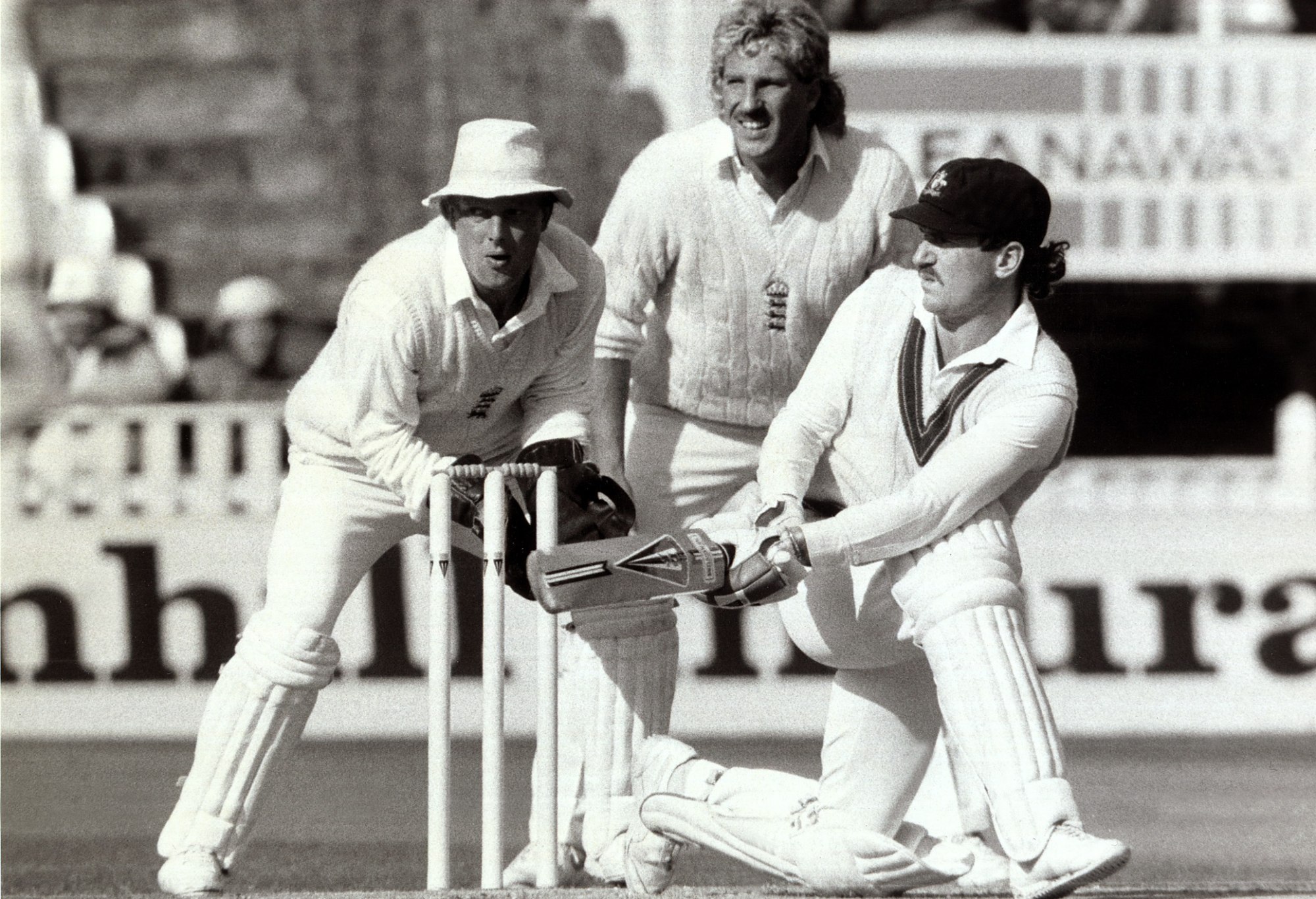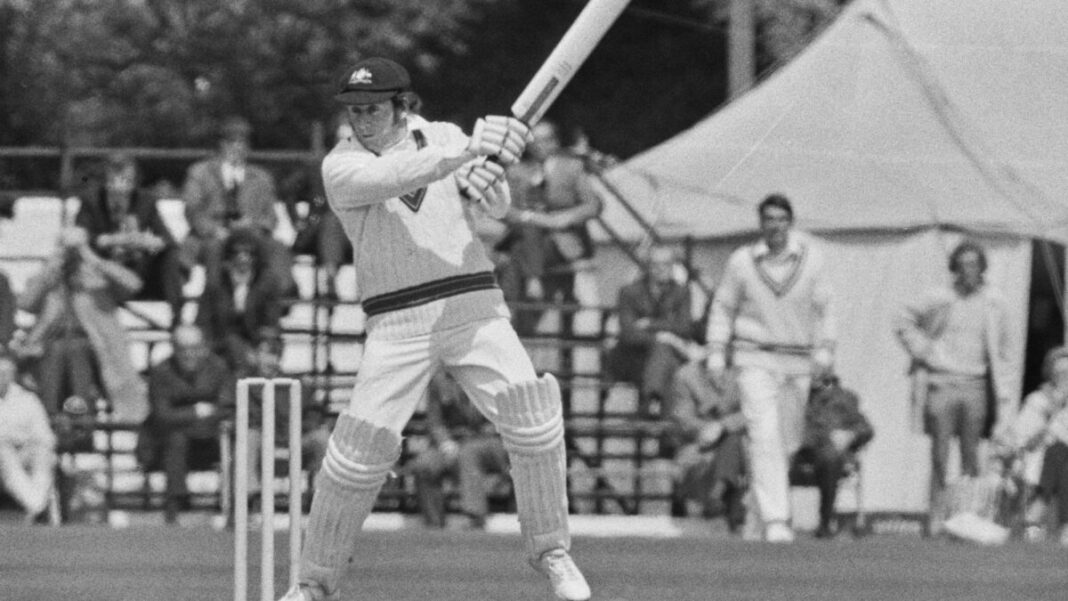Pat Cummins is the 47th player to have held the highest honour in Australian cricket – that of captaining the men’s national side.
Some have performed the task on a single occasion filling in due to injury or sickness. Others such as Allan Border, Mark Taylor, Ricky Ponting and Steve Waugh have held the position on over 50 occasions.
Over the nearly 150 years of Test cricket, the results under the custodianship of these players have been mixed.
Do captains make the players or do players make the captain?
Would Waugh and Border’s winning records have simply been interchanged had their birth dates been reversed?
Would Chappelli have been able to resurrect a poor Australian team without his brother Greg, Dennis Lillee, Jeff Thomson, Rod Marsh and his own improved batting record coinciding with his ascent to the role?
Why do some captains seemingly flourish with the burden of leadership and others struggle? What enabled Imran Khan to average 50 with the bat and 20 with the ball once he took on the captaincy – or was this just the predetermined path his career was taking anyway?
Captaincy is almost impossible to measure. If it is virtually unfeasible to make comparisons between players records over time, especially given the change in variables inherent with trying to do so. It is even more difficult to do so with captains. And probably equally pointless.
This article then will explore some of the anomalies and some of the characteristics which great captains seem to share.
Like every other aspect of cricket, statistics abound to assist in the process. But to compare the winning record of Waugh with up to six of the all-time greats of Australian cricket in his side with that of Kim Hughes is an exercise in futility.
Even to compare the records of the successful captains does not really provide much enlightenment. Playing in an era when staving off defeat and achieving a respectable draw was seen as an accomplishment almost equal in value to victory Richie Benaud’s winning record of 42% compares poorly with Pat Cummins 62% whereas their respective records of wins in decided matches is virtually identical.
When the game is on the line both players seem to know what it takes to achieve victory.
The records of many captains do not indicate what it would be assumed that they should.
Sir Donald Bradman, for example, has the highest ratio of wins in decided matches of all captains but his overall record of 15 wins from 24 matches does not stand out from either his predecessor Bill Woodfull’s 14 from 25 (including Bodyline) or his successor Lindsay Hassett’s 14 from 24. It would be logical to expect greater winning records from captains whose sides carried, statistically at least, an extra batter.
Some players inherited weak sides and turned them into strong sides during their captaincy. Anantha Narayanan applied a simple 2-1-0 formula to the W-D-L results of a range of captains, Australian and elsewhere.
He analysed the results of the 10 Tests prior to their captaincy, their actual captaincy with the last Ten tests of their captaincy shown separately. Not surprisingly the metric shows significant improvement in the “result indices” for Bradman, Ian Chappell, Border and Waugh of the Australians.
This, however, really only provides statistical support for what is anecdotally already widely known.
Again though, how much of this improvement is due to their captaincy and how much due to the emergence of better players joining the side during their tenure.
Richie Benaud, Ian Chappell and Bill Lawry in 2013. (Photo by Mark Kolbe/Getty Images)
To take that a step further how much of the performance of these better players is due to the captain’s ability to get the best out of the players and how much is due to the player himself.
Several players notably Warwick Armstrong, Ian Chappell, Monty Noble, Bobby Simpson and Steve Smith’s individual batting records improved dramatically upon adopting the responsibilities associated with the captaincy. While Mark Taylor, Bill Woodfull, Joe Darling and Herb Collins records were all adversely affected once the (C) was placed after their names on the team sheet.
Did this make their captaincy less effective or were other factors at play? Certainly in the case of Woodfull other factors were at play.
Benaud while not realising any dramatic change in batting assumed greater responsibility with the ball as captain with the result that his productivity measured in wickets per match improved from just over three to nearly five with only minor variance in his average and strike rates.
While many of these captains have crossed the frontier and won series in England only three in Ian Johnson, Bill Lawry and Adam Gilchrist have done so in India.
Following on from personal performance strategy is a key component of captaincy and while there have, of course, been variances both between different captains and even within individuals as their careers progressed most of these captains have had some high degree of competence in this aspect.
Lady Luck, of course, plays her part also. Warwick Armstrong with the sudden emergence of several great players immediately after WWI was quoted as recognising that “sometimes it is better to be lucky than good”.
Monty Noble seems to have been the template of captains to come. Noble by name as well as nature he is remembered as having played the game in its true spirit.
In his book “The Games the Thing” he wrote “The great leader is the embodiment of all the hopes, virtue, courage and ability possessed by the ten men under his command. If he is not, he is but the shadow and lacks the substance of captaincy. He will not last.” So, while Bradman may have said that the players are the custodians of the game it appears that Noble actually lived it.
He was also an innovator. Prior to Noble, Test cricket had seen the main bowler bowled into the ground from one end, commonly bowling mammoth spells. He was the first captain to embrace the concept of rotating his bowlers to keep them fresh.
He also initiated keeping the cover region open to entice batsmen to drive luring them into providing catches in the slips cordon.
Despite his scrupulously fair nature he was also stern so that the players knew who was in charge and strict in terms of the implementation of rules and codes of behaviour. He was known to admonish his own players who appealed when they knew the batsman was not out and would indicate so to the umpires.
Once when his batting partner lofted the ball and called to him ‘come on run he’ll drop it’ Noble stopped the game to speak to his teammate that such behaviour was unacceptable.
In all ways – although he would have disapproved of Ian Chappell’s sledging of opponents and of Waugh’s mental disintegration strategies – the respect Noble insisted on for the game, for his teammates, for the officials and for the opponents – could equally be applied to any number of subsequent captains notably Benaud and Chappell.
Noble believed in respecting the game and believed in winning or losing the basic contest between bat and ball based on cricket skills and did not see room in the game for intimidatory tactics as a method.
I agree with Noble and would much rather see a match decided by an inspired spell of bowling, a brilliant innings or a scintillating piece of fielding than a tirade of mindless verbiage aimed solely at undermining an opponent. While I recognise that mental strength is a key component of a players makeup bullying is innately cowardly, and I prefer to be excited by displays of courage in a contest.
It has been said that Ian Chappell’s teams would have run through brick walls for him such was the esteem with which the playing group held him. There are very few captains who at one stage or another have not clashed with a team member and in some cases with a number of them.
Perhaps such things are inevitable, and it is the measure of the leader as to how both parties recover from it.
It is thought, however, that truly effective man managers have the ability to foresee and prevent such confrontations prior to them eventuating and where deemed necessary to sacrifice their own situation for the betterment of the team.
Similarly, clashes between team members are inevitable. Strong leaders seem to be able to get individuals to if not necessarily like each other at least to respect each other and to put aside their differences for the team goal – at least for the duration of the match.
The focus on the team being bigger than the individual is paramount.
While effective captaincy is not a popularity contest and never should be, engaging and reciprocating the full support of the team is an essential component of the makeup of a great captain.
Having run the statistics and decided that really, they give less indication of the effectiveness of a captain than they do of a player it would seem it is the intangibles that differentiate the good captain from the great captain.
It is, of course, a bonus if the captain himself is able to maintain good form with the bat or ball and thus make contributions to the team performance but as both team and individual performances improved during the tenure of Waugh, Border and Ian Chappell, some of the true giants of the game such as Sachin Tendulkar, Brian Lara and Sir Garfield Sobers achieved lacklustre results as captains for a variety reasons even if their own form remained good.
Mike Brearley, by contrast, is commonly rated as one of England’s greatest ever captains despite never being able to compile a playing record commensurate with that of a Test batter.
Other players with great playing records such as Archie McClaren and Walter Hammond are regarded as being among the worst captains ever for their treatment of players in their charge. Neither was able to get the best from their players.
Strategy can be largely learned or if not entirely learned there will generally be other players within the team willing and able to assist in this area.
It would therefore seem to come down to the “intangibles” which while they may be refined, cannot be learned and are things that the player must bring with them to the role. Leadership for want of a better word.
In the same way that a person can be taught a variety of skills their ability to perform those skills to a high level will be determined by these intangible “attitude” aspects that they bring with them and without which they cannot perform at their peak.
So, while Tendulkar can be the best batter in the game he cannot necessarily help someone else to be their best. He perhaps lacks the understanding of what the less naturally talented player requires to be able to perform at their best.
The ability to help a player realise their full potential and have confidence in themselves is lacking in the less successful captains.

Allan Border batting at Edgbaston in 1985. (Photo by MSI/Mirrorpix/Getty Images)
One of these leadership attributes is courage – still going for a win chasing 233 when you are 6-92 and in significant peril of losing. Opening the batting against the fearsome West Indies attack to show your teammates how better to manage their fears.
Of the 47 captains then, to have led Australia there are a handful that stand out as having the greatest combination of all three strings to their bow: personal performance, strong strategic skills and leadership.
With varying degrees of each three I think our best captains have been; Monty Noble, Bill Woodfull, Richie Benaud, Ian Chappell, Mark Taylor, Steve Waugh and Allan Border.
If I have to select one as being Australia’s finest Test captain, I would choose Benaud marginally ahead of Noble.
Since both pre-date my following cricket their selections are, of course, based purely on anecdotal evidence – what I have seen and what I have heard. My selection from captains that I seen is Ian Chappell.

